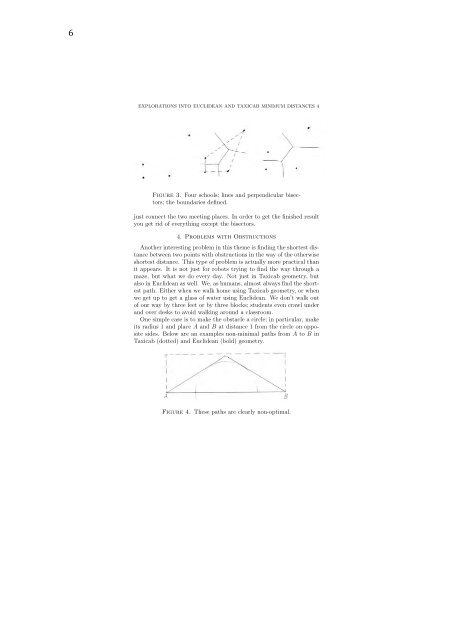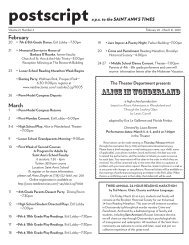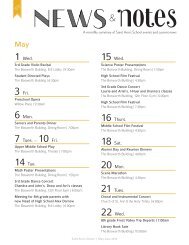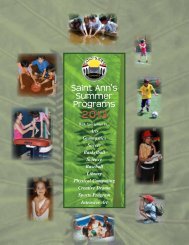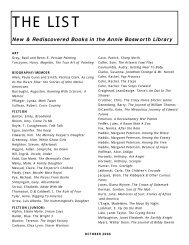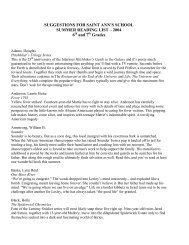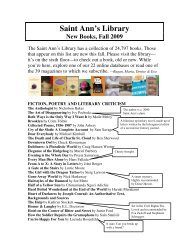Mathematical Journeys - Saint Ann's School
Mathematical Journeys - Saint Ann's School
Mathematical Journeys - Saint Ann's School
You also want an ePaper? Increase the reach of your titles
YUMPU automatically turns print PDFs into web optimized ePapers that Google loves.
6 <br />
<br />
EXPLORATIONS INTO EUCLIDEAN AND TAXICAB MINIMUM DISTANCES 4<br />
Figure 3. Four schools; lines and perpendicular bisectors;<br />
the boundaries defined.<br />
just connect the two meeting places. In order to get the finished result<br />
you get rid of everything except the bisectors.<br />
4. Problems with Obstructions<br />
Another interesting problem in this theme is finding the shortest distance<br />
between two points with obstructions in the way of the otherwise<br />
shortest distance. This type of problem is actually more practical than<br />
it appears. It is not just for robots trying to find the way through a<br />
maze, but what we do every day. Not just in Taxicab geometry, but<br />
also in Euclidean as well. We, as humans, almost always find the shortest<br />
path. Either when we walk home using Taxicab geometry, or when<br />
we get up to get a glass of water using Euclidean. We don’t walk out<br />
of our way by three feet or by three blocks; students even crawl under<br />
and over desks to avoid walking around a classroom.<br />
One simple case is to make the obstacle a circle; in particular, make<br />
its radius 1 and place A and B at distance 1 from the circle on opposite<br />
sides. Below are an examples non-minimal paths from A to B in<br />
Taxicab (dotted) and Euclidean (bold) geometry.<br />
Figure 4. These paths are clearly non-optimal.<br />
<br />
<br />
<br />
<br />
<br />
<br />
<br />
<br />
<br />
<br />
<br />


